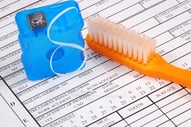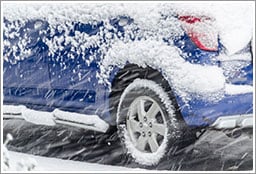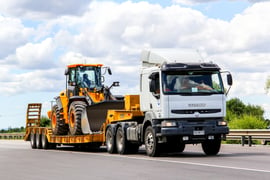 In an effort to align with national insurance rating, the Wisconsin Commissioner of Insurance is eliminating the “Anniversary Rating Date” effective May 1, 2017. What does this mean for Wisconsin employers? You no longer need to wait for your effective date to take advantage of new rates.
In an effort to align with national insurance rating, the Wisconsin Commissioner of Insurance is eliminating the “Anniversary Rating Date” effective May 1, 2017. What does this mean for Wisconsin employers? You no longer need to wait for your effective date to take advantage of new rates.
While the rate is one piece of the puzzle, other elements that play a vital role:
- How does changing your effective date affect your MOD?
- What are the short term policy cancellation penalties?
- What are the possible dividend implications?
While some of these answers remain to be seen, below are excerpts from the IIAW of Wisconsin in a recent article by Bernard Rosauer, President of the WCRB.
Anniversary Rating Date (ARD) Endorsement Withdrawal
The ARD change no longer requires the use of prior policy effective dates to govern the application of rates, rules and forms for workers compensation.
Without the ARD rule, nothing would prohibit an employer from cancelling a policy to take advantage of a recent rate filing decrease. The short rate penalty exists which acts as a deterrent to an employer who cancels. That penalty would likely substantially reduce, or complete eliminate, any “gains” to be had by the cancelling early to take advantage of the new, lower rates. Also, Wisconsin statute contains specific prohibitions for a carrier to cancel a policy except for issues such as nonpayment of premium, breach of the policy terms, fraud, and misrepresentation.
How Will the New ARD Rule Be Implemented?
The WCRB’s standard is to file changes on a new and renewal basis with a specific implementation date. For this particular item, this means that the ARD is eliminated for new renewal, and written policies effective May 1, 2017 and later.
Example 1
A policy is effective April 30, 2017 (one day before ARD is eliminated) and has an ARD of August 1, 2017. That August 1, 2017 ARD would still apply. When the renewal policy is written April 30, 2018, the rates in effect as of that policy effective date would apply for the full term of the policy.
Example 2
A policy is effective September 1, 2016. The rates effective October 1, 2015 apply until the September 1, 2017 renewal. The policy is cancelled and rewritten effective May 1, 2017. No ARD applies and the rates effective October 1, 2016 are applicable to the May 1, 2017 rewritten policy.
With complex and convoluted changes such as the ARD withdrawal, it is critical you have an agent with the analytical tools and capabilities to provide a full scope of the financial implications that can result from simply changing your effective date. R&R’s Work Comp Division is at the forefront of this change and can provide a thorough analysis to support your insurance decisions.
For more information, download the Anniversary Rating Date Road Map or contact your Knowledgebroker at R&R.
 In CNA Insurance's 2016 "Claim Report", they recap the statistics behind dental claims for the year. Below are a few that stuck out to me - all the more reason that we make sure your Practice is properly covered.
In CNA Insurance's 2016 "Claim Report", they recap the statistics behind dental claims for the year. Below are a few that stuck out to me - all the more reason that we make sure your Practice is properly covered. 
 In an effort to align with national insurance rating, the Wisconsin Commissioner of Insurance is eliminating the “Anniversary Rating Date” effective May 1, 2017. What does this mean for Wisconsin employers? You no longer need to wait for your effective date to take advantage of new rates.
In an effort to align with national insurance rating, the Wisconsin Commissioner of Insurance is eliminating the “Anniversary Rating Date” effective May 1, 2017. What does this mean for Wisconsin employers? You no longer need to wait for your effective date to take advantage of new rates. Steve and Julia are a couple in their late 50’s whose children have started promising professional careers and live independently. They have two vehicles and live in a newly constructed home in Waukesha, WI. They also have a second home in Minocqua, WI with a boat and boat house. Both Steve and Julia serve on various boards and are active volunteers in their community. Their previous insurance plan exhibited many of the typical patterns of overpaying and underinsuring for their homeowner, auto, valuables, boat and umbrella liability coverages. Steve and Julia significantly improved their financial security while reducing their total premium 18% by rebalancing their program as follows:
Steve and Julia are a couple in their late 50’s whose children have started promising professional careers and live independently. They have two vehicles and live in a newly constructed home in Waukesha, WI. They also have a second home in Minocqua, WI with a boat and boat house. Both Steve and Julia serve on various boards and are active volunteers in their community. Their previous insurance plan exhibited many of the typical patterns of overpaying and underinsuring for their homeowner, auto, valuables, boat and umbrella liability coverages. Steve and Julia significantly improved their financial security while reducing their total premium 18% by rebalancing their program as follows: If someone asked you to create a list of every possession in your home today, how many items do you think you’d remember? Think about just one room. Can you envision what’s in every drawer, hanging on each wall, or sitting on the shelves?
If someone asked you to create a list of every possession in your home today, how many items do you think you’d remember? Think about just one room. Can you envision what’s in every drawer, hanging on each wall, or sitting on the shelves? Learn more about how to protect your organization from the most commonly cited OSHA standards and frequently misunderstood safety practices.
Learn more about how to protect your organization from the most commonly cited OSHA standards and frequently misunderstood safety practices.  ith another year in the books, we took a look back at the top 5 most popular R&R articles of last year.
ith another year in the books, we took a look back at the top 5 most popular R&R articles of last year. As much as we all love the holidays, there can be a lot of stress that comes along with the joy and celebration. One of the stressors for many of us is driving, especially after a holiday party or celebration.
As much as we all love the holidays, there can be a lot of stress that comes along with the joy and celebration. One of the stressors for many of us is driving, especially after a holiday party or celebration. The Wisconsin Compensation Rating Bureau is now requiring a mandatory audit noncompliance charge (ANC). Effective January 1, 2017 any insured who does not comply with a workers compensation audit will be billed an additional two times the estimated workers compensation premium.
The Wisconsin Compensation Rating Bureau is now requiring a mandatory audit noncompliance charge (ANC). Effective January 1, 2017 any insured who does not comply with a workers compensation audit will be billed an additional two times the estimated workers compensation premium. Without inland marine coverage, your business’s personal property is not covered if it is being transported off site. A business’s personal property can include: machinery, equipment, stock, leased property, furniture, and any other property owned and used by the business.
Without inland marine coverage, your business’s personal property is not covered if it is being transported off site. A business’s personal property can include: machinery, equipment, stock, leased property, furniture, and any other property owned and used by the business.
